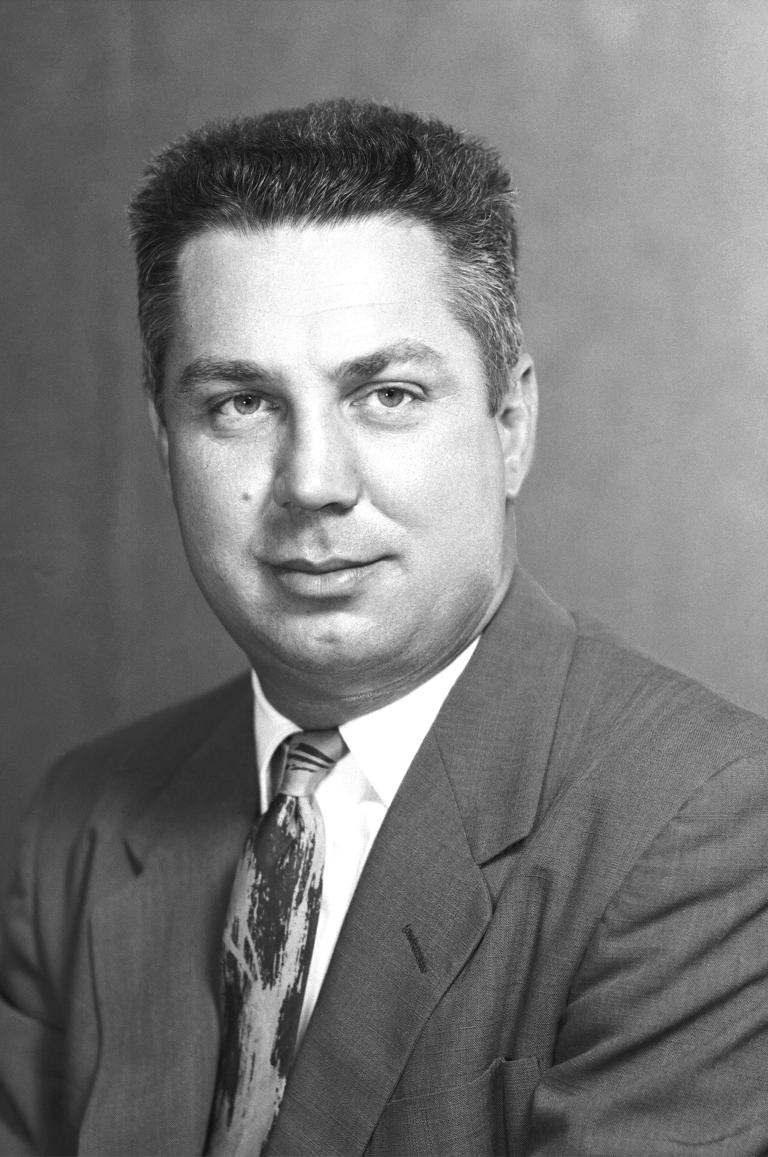
Walter C. Williams
Former Armstrong Center Director
Walter C. Williams received a Bachelor of Science in aeronautical engineering from Louisiana State University, Baton Rouge, Louisiana, in 1939. After graduation, he was employed by the Glenn L. Martin Company of Baltimore, Maryland, and later that same year joined the Science staff of the NASA’s Langley Research Center where he initially worked in the stability and control field, predominately with World War II aircraft.
In September 1946, Williams was assigned as the NACA project engineer for the X-1 experimental aircraft program. (The National Advisory Committee for Aeronautics was the predecessor of NASA.) When the Muroc detachment was expanded into a permanent facility, he was appointed as the first chief of the NACA High-Speed Flight Station and continued in that capacity after the station was absorbed by NASA along with other NACA facilities on Oct. 1, 1958.
In this assignment, he directed a great variety of flight research programs:
- Comprehensive programs involving the D-558-II airplanes, one of which was the first to fly twice the speed of sound.
- X-4 programs emphasizing stability and control investigations.
- Variable sweep wing X-5 programs.
- Programs involving the XF-92A, prototype delta-wing fighters.
- B-47 flight investigations.
- Investigation using Century Series fighters, F-100, F-102, F-104, F-105, and F-107.
In his position as chief of the NASA High-Speed Flight Station, Williams was actively engaged in establishing and planning the research requirements for the development of the X-15 aircraft. In January 1958, he became chairman of the X-15 Flight Test Steering Committee, changed in January 1959 to the X-15 Joint Operating Committee. In April 1959, he was appointed a member of the Advisory Group for Air Research and Development for the North Atlantic Treaty Organization (NATO).
He was an associate Fellow of the Institute of the Aerospace Sciences (IAS) and a member of the Mexico-U.S. Commission for Space Tracking Observation Project Mercury. Williams had been prominent in program participation and was chairman of the Flight Testing Session, IAS in 1958 and session chairman of the Conference on the Progress of the X-15 project in 1959.
He authored numerous NASA technical papers on aircraft flight research. He also presented a number of papers, including “The X-15 Research Airplane Program,” presented at the American Rocket Society Space Exploration Regional Meeting in San Diego, California, in 1958 and “The Comparison of Flight Measurement of High-Speed Airplane Stability and Control Characteristics,” presented in Brussels, Belgium, in August 1956.
On Aug. 28, 1959, Williams left the NASA High-Speed Flight Station and was assigned responsibility for overall launch operations in Project Mercury. He directed the Worldwide Tracking Network and recovery operations for manned space flight missions. As Operations director in Mercury Control Center at Cape Canaveral, Florida, Williams utilized the combined know-how of approximately 20 scientists and engineers on the site. Each of these men was responsible for a specific facet of space flight and reported directly to Williams during flight operations, which enabled him to assess the flight and make necessary decisions.
Williams performed as Flight Operations director for some of America’s earliest manned space flights:
- The suborbital flight of Astronaut Alan B. Shepard, Jr. on May 5, 1961.
- The suborbital flight of Astronaut Virgil I. Grissom on July 21,1961.
- The three-orbit flight of Astronaut John M. Glenn, Jr. on Feb. 20, 1962.
He also directed the unmanned orbital flight of Sept. 13, 1961, and the two-orbit mission of the chimpanzee, Enos, on Nov. 29, 1961.
In 1963, Williams became deputy Associate Administrator in the Office of Manned Space Flight at NASA Headquarters. After working in management positions with Aerospace Corp. from 1964 to 1975, he returned to NASA Headquarters as chief engineer. He retired from that position in July 1982.
On Nov. 17, 1995, Center Director Kenneth J. Szalai renamed the Integrated Test Facility (ITF) as the Walter C. Williams Research Aircraft Integration Facility.























